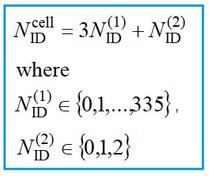M-PHY Interface: Protocol and Advantages
Advertisement
This page describes the basics of the M-PHY (MIPI Physical Layer) protocol and its advantages.
Introduction
M-PHY is a physical layer protocol developed for DigRFv4, LLI, Unipro, CSI-3, and DSI-2 protocols by the MIPI Alliance. It also supports the UFS protocol standard developed by JEDEC and the SSIC protocol standard developed by USB-IF. M-PHY is commonly used in mobile devices like smartphones and tablets for chip-to-chip communication.
The MIPI Alliance develops hardware and software interface specifications for mobile devices. Popular physical layer standards include C-PHY, D-PHY, M-PHY, HSI, Slimbus, DigRF, etc. M-PHY is considered the successor to the D-PHY layer.
Both M-PHY and D-PHY physical layers are designed to be reusable and scalable for different components within a mobile terminal. Different versions of the M-PHY specifications have been released, including versions 2.0, 3.0, 4.1, and 5.0.
What is M-PHY?
The M-PHY interface supports data rates exceeding 5 Gbps. It embeds the clock signal within the data frame using 8b/10b encoding.
It’s an optical-friendly interface that supports data transfer in two modes: burst mode and continuous mode. It also supports both High Speed (HS) and Low Speed (LS) modes. The low-speed mode accommodates both PWM (Pulse Width Modulation) and NRZ (Non-Return to Zero) signaling. It supports both large and small amplitude drive strengths and includes two types of modules (Type-I and Type-II).

As the figure illustrates, an M-PHY link consists of at least two uni-directional lanes. Each lane comprises an M-TX module that communicates with an M-RX module on another chip via two differential lines. These differential lines carry both HS and LS signals.
Here are some features of the M-PHY physical layer protocol developed by the MIPI Alliance:
- Supports signaling speeds from 10 kbit/sec to 11.6 Gbit/sec per lane and supports 1-4 lanes
- Serial interface with embedded clock using 8b10b symbol encoding/decoding scheme
- M-PHY supports various states viz. LS burst, HS burst, STALL, HIBERN8 and SLEEP
- Supports Type-I and Type-II LS modes
Benefits or Advantages of M-PHY Layer
The following are the benefits and advantages of using the M-PHY layer:
- Improved Performance and Power Management: Offers significant improvements in both areas.
- Robust Against RF Interference: Designed to be resistant to RF interference and generates low RF emissions.
- Power Saving Features: Utilizes low power modes, switchable termination, and programmable low amplitude for optimized power consumption.
- High Speed: Achieves high speeds exceeding 5 Gbps using differential signaling.
- Fewer Signal Wires: Requires fewer signal wires (and therefore, fewer pins) because it uses 8b/10b encoding, which embeds the clock signal within the data.
- More Bandwidth per Pin: Provides more bandwidth per pin and improved power efficiency.
- Flexible Bandwidth Support: Supports a variable number of links/sub-links/data lanes to enable flexible bandwidth allocation.
Also, refer to the advantages or benefits of Unipro interface protocol, SLIMbus interface protocol, and SoundWire interface protocol.
Refer to the advantages and disadvantages of the following interface protocols: UART, SPI, I2C, I2S, Serial interface, Parallel interface.
Advertisement
 RF
RF



